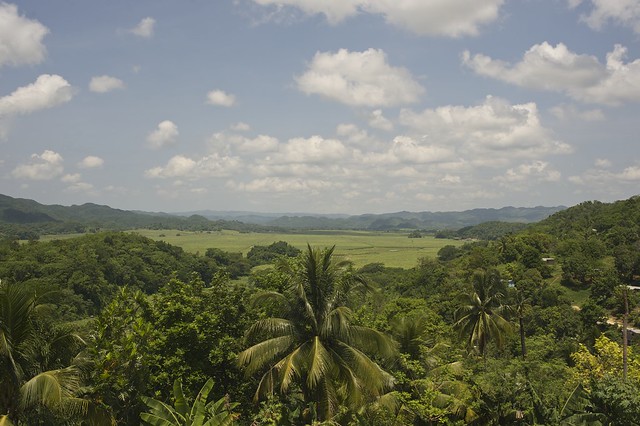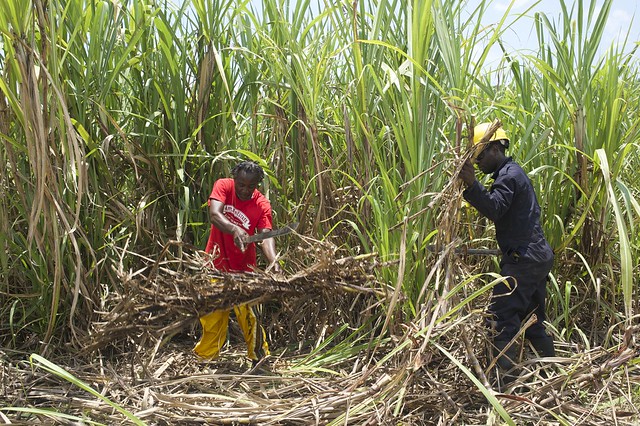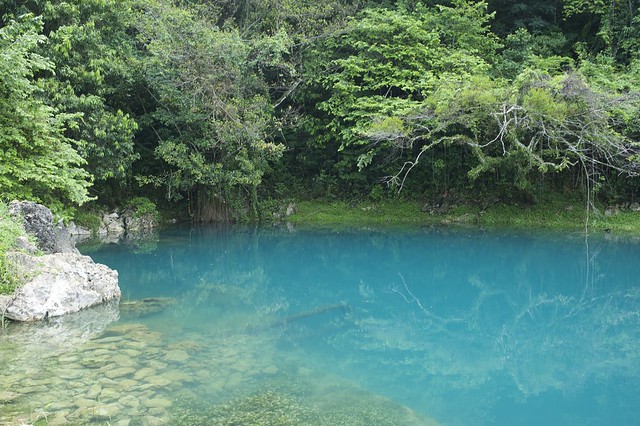Produced only in Jamaica on one single estate in a small, circumscribed geographic area, Appleton Estate rum is one of the world’s few rums with a terroir. The core event of my Cane to Cocktail tour was a visit to the estate to discover what sets it apart from other rums and gives it such deep flavour.
At 400 feet above sea level, surrounded by mountains more than 2,000 feet above sea level and spread across 4,600 hectares (11,400 acres) of the verdant Nassau Valley with its rich soil and distinctively hot and sticky microclimate – Appleton Estate grows its sugarcane and produces its rums in an area of the island known as Cockpit Country. It’s been doing just that right there for more than 265 years, making it Jamaica’s oldest sugar estate and distillery in continuous production.
Jamaica’s humid Cockpit Country is a karst formation formed over millions of years. Karst is a generic name given to limestone that has been chemically eroded by rain, and there are only three cockpit karst formations exist in the world – in Serbia and Montenegro, China, and Jamaica. The Nassau Valley is what’s called a polje, a broad flat river valley in a cockpit karst created over millions of years as river floods and recedes. The sediment left behind after the water recedes leaves nutrient-rich soil. Appleton Estate is the only sugar estate in the world located within a polje resulting in particularly flavoursome and aromatic cane.
[FYI: I swiped much of the above paragraph from an Appleton Estate press release as I thought is was worth mentioned but was scratching my head too much trying to figure out how to put it in my own words.]
Of course, advances in technology and better methods of ensuring a standard level quality have been incorporated over the years, but much of how the folks at Appleton go about distilling rum remains true to its origins. A fair amount of the cane is harvested by machete as it has been done for centuries. The same water source – a picturesque and vividly turquoise stream flowing its way into the Black River – is still used (and is the only source used) to this day. Molasses fermentation, copper pot distillation, and ageing in ex-Bourbon barrels are done the same way as two and half centuries ago.
But you don’t have to be invited on any sort of exclusive Cane to Cocktail press tour to see all that for yourself (well, maybe getting permission to access the water source could be tricky). The estate opens its doors to the public Monday through Saturday for distillery tours. Tours include a Welcome Rum Punch greeting, a DVD presentation about rum making, a walking tour around the grounds as well as inside the distillery and ageing house, and a guided tasting session through a range of Appleton Estate rums.
A visit to the estate also provides the perfect excuse to see rural Jamaica and the unique landscape of the Cockpit Country and get a sense of conditions that help to create some of the world’s finest rums. And for real rum connoisseurs, it’s a chance to go gaga in the well-stocked gift shop and splurge with a few thousands dollars purchase of Appleton Estate 50 Year Old Jamaica Independence Reserve (or any number of less expensive bottles and souvenirs).
Find out more at appletonrumtour.com.
Be sure to check back here soon for more highlights from my tour of Jamaica with Appleton Estate.
























